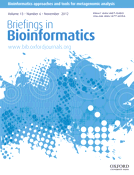
BIOLOGICAL CYBERNETICS
metrics 2024
Pioneering Research in Biological Cybernetics
Introduction
BIOLOGICAL CYBERNETICS is a premier journal published by SPRINGER, dedicated to advancing the fields of biotechnology and computer science through the lens of biological interactions. With an ISSN of 0340-1200 and an E-ISSN of 1432-0770, this esteemed journal has been a cornerstone of academic research since its inception in 1961 and is set to continue influencing the landscape of biological cybernetics through 2024. The journal currently holds a Q3 ranking in the Biotechnology category and a Q2 ranking in miscellaneous Computer Science according to the 2023 category quartiles, showcasing its credibility and impact in the interdisciplinary nexus of these fields. Although it does not provide open access options, researchers and students can engage with its innovative content that includes original research articles, reviews, and methodologies that explore the computational modeling of biological systems and the integration of artificial intelligence in biological research. With its strategic location in the United States and a robust publication record, BIOLOGICAL CYBERNETICS remains an essential resource for anyone looking to deepen their understanding and application of cybernetic principles within biological contexts.
Metrics 2024
 0.42
0.42 1.70
1.70 1.90
1.90 104
104Metrics History
Rank 2024
Scopus
IF (Web Of Science)
JCI (Web Of Science)
Quartile History
Similar Journals

Bioinformatics Advances
Empowering Researchers with Cutting-edge Bioinformatics SolutionsBioinformatics Advances, published by Oxford University Press, is an esteemed academic journal that serves as a vital platform for the dissemination of innovative research in the rapidly evolving fields of bioinformatics and computational biology. With a promising E-ISSN of 2635-0041, this journal has made significant strides since its inception in 2021, achieving a commendable Q1 ranking in both the Computer Science Applications and Genetics categories, alongside respectable Q2 rankings in Molecular Biology and Structural Biology as of 2023. Though currently not an open-access publication, its critical insights cater to an audience keen on advancing knowledge and technology in genomic studies and data analytics. The journal emphasizes high-quality research and aims to facilitate the integration of computational techniques within biological sciences, making it an essential resource for researchers, professionals, and students alike who seek to stay at the forefront of bioinformatics advancements.

AIMS Biophysics
Advancing molecular insights for a healthier tomorrow.AIMS Biophysics, published by the American Institute of Mathematical Sciences (AIMS), is an esteemed open-access journal dedicated to advancing the fields of biophysics, biochemistry, molecular biology, and structural biology. Launched in 2014, this journal provides a platform for researchers and professionals to disseminate high-quality research findings that contribute to the understanding of complex biological systems at the molecular level. With an ISSN of 2377-9098, AIMS Biophysics is indexed in Scopus, where it ranks in the fourth quartile across several categories, reflecting its commitment to addressing important issues within the scientific community. The journal aims to foster interdisciplinary collaboration and innovation through the publication of original research, reviews, and methodologies that advance the field. The open-access model ensures that cutting-edge research is freely available, promoting global access to scientific knowledge and enhancing visibility for authors. Nestled in the vibrant scientific landscape of the United States, AIMS Biophysics is poised to impact the evolving discourse in biophysics and related areas as it continues through its convergence period from 2014 to 2024.

Biophysics Reviews
Exploring the Interplay of Biochemistry and PhysicsBiophysics Reviews, published by AIP Publishing, is an emerging journal in the field of biophysics, aiming to bridge the gap between fundamental biophysical research and applied sciences. With an ISSN of 2688-4089, this journal provides a critical platform for the dissemination of high-quality reviews covering the interplay between biochemistry, molecular biology, biotechnology, and materials science. As of 2023, it provides essential insights for researchers and professionals interested in understanding biomolecular processes at a physical level. Although the journal is not currently open access, it is making strides in establishing its impact in the competitive landscape, as indicated by its Scopus rankings in various related fields, including biochemistry and bioengineering. With a focus on enhancing collaborations among scientists and practitioners, Biophysics Reviews is poised to become a vital resource for anyone looking to deepen their understanding of how biophysical principles can be applied to solve complex biological challenges.

npj Systems Biology and Applications
Unveiling New Dimensions in Biological Systemsnpj Systems Biology and Applications, published by NATURE PORTFOLIO, is a premier open-access journal that has been at the forefront of the field since its inception in 2015. With a commendable focus on the interdisciplinary integration of applied mathematics, biochemistry, computer science, and drug discovery, the journal currently enjoys a Q1 ranking across multiple categories, showcasing its significant impact within the scientific community. In 2023, it ranked 70 out of 635 in Applied Mathematics and holds a notable place in the 89th percentile, confirming its esteemed reputation among researchers. Situated in the United Kingdom, this journal not only promotes innovative research in systems biology but also serves as an essential platform for the dissemination of high-quality studies that delve into modeling, simulation, and the application of biological systems in drug discovery processes. With an open-access model, authors can reach a broad audience, enhancing collaborations and advancing knowledge across disciplines, making it an indispensable resource for researchers, professionals, and students alike seeking to contribute to the evolving landscape of systems biology.

Quantitative Biology
Unlocking Complex Biological Systems with Quantitative ApproachesQuantitative Biology is a prestigious journal published by WILEY, focusing on the interdisciplinary study of quantitative approaches in the biological sciences. With an ISSN of 2095-4689 and an E-ISSN of 2095-4697, this journal has established itself as a critical platform for researchers exploring complex biological systems through mathematical and computational methodologies. Operating out of China, Quantitative Biology significantly contributes to its field, holding a Q2 ranking in various categories, including Applied Mathematics and Biochemistry, Genetics and Molecular Biology, according to the latest Scopus rankings. These rankings reflect the journal's commitment to publishing high-quality research that employs advanced modeling and simulation techniques. The journal's impact is evident with its position in the 84th percentile for Applied Mathematics, indicating its relevance and growth in a competitive academic landscape. Although it does not currently operate under an Open Access model, the journal is pivotal for professionals and students alike, aiming to bridge the gap between mathematical theories and biological applications. Researchers are encouraged to submit their innovative findings and engage with the vibrant community dedicated to advancing the quantitative understanding of biological phenomena.

BRIEFINGS IN BIOINFORMATICS
Navigating the Evolving Landscape of BioinformaticsBRIEFINGS IN BIOINFORMATICS is a premier academic journal dedicated to the dynamic field of bioinformatics, published by Oxford University Press. With a prestigious standing reflected in its Q1 quartile rankings in both Information Systems and Molecular Biology, this journal serves as an essential resource for researchers, professionals, and students eager to explore the intersection of biology and computational sciences. The journal not only publishes high-impact research articles but also reviews and critical commentaries that push the boundaries of understanding in bioinformatics. As it converges its objectives towards fostering innovation and knowledge dissemination from 2000 to 2024, BRIEFINGS IN BIOINFORMATICS offers rich insights that remain pivotal to advancements in genomic studies, data integration, and computational tools. Its ranking in the top percentiles of Scopus—30th among 394 in Computer Science and 44th among 410 in Molecular Biology—underscores the journal's influential presence in the academic community. Engaging with the latest research and trends, this journal is integral for anyone invested in the future of life sciences and data analytics.

Physics of Life Reviews
Exploring the Intersection of Physics and Life SciencesPhysics of Life Reviews is an esteemed journal published by ELSEVIER, focusing on the interdisciplinary study of life sciences through the lens of physical principles. Since its inception in 2004, the journal has garnered considerable recognition, achieving a remarkable impact factor that underscores its significance—ranking in the top quartile (Q1) across three distinct categories in 2023, including Agricultural and Biological Sciences, Artificial Intelligence, and Physics and Astronomy. These exceptional rankings highlight the journal's commitment to advancing research and fostering innovation in the application of physical concepts to biological systems. Physics of Life Reviews provides comprehensive reviews, critical analyses, and cutting-edge insights that are essential for researchers, professionals, and students seeking to navigate and contribute to this dynamic field. As an essential resource, the journal encourages the exploration of new paradigms and methodologies, facilitating the growth of knowledge at the intersection of physics and life sciences.

Networks and Heterogeneous Media
Exploring the Intersection of Complex Systems and Heterogeneous MediaNetworks and Heterogeneous Media is a distinguished journal published by the American Institute of Mathematical Sciences (AIMS), focusing on the dynamic interplay of networks across various interdisciplinary fields including applied mathematics, computer science, and engineering. With a diverse and robust scope, the journal aims to facilitate the advancement of knowledge regarding complex systems and heterogeneous media through the publication of cutting-edge research. The journal has exhibited notable academic impact, currently positioned in Q2 and Q3 quartiles across several key categories such as applied mathematics, engineering, and statistics, indicating its relevance and influence within the scientific community. Researchers and professionals exploring intricate mathematical models, computational applications, and statistical methodologies will find Networks and Heterogeneous Media an invaluable resource for both foundational studies and innovative applications. The journal regularly publishes high-quality articles, contributing to emerging discussions and developments in a rapidly evolving field.

CHAOS
Bridging Disciplines to Illuminate Chaotic PhenomenaCHAOS, an esteemed journal published by AIP Publishing, is a cornerstone of interdisciplinary research, focusing on the intricate dynamics of complex systems across various scientific domains. With a balanced impact factor, this journal emphasizes high-quality contributions in Applied Mathematics, Mathematical Physics, and Statistical and Nonlinear Physics, while also exploring intersections with Medicine and Physics and Astronomy. With rankings showing a remarkable percentile placement, notably #7 in Mathematical Physics and #10 in Statistical and Nonlinear Physics, CHAOS has established itself as a leading platform for disseminating groundbreaking research since its inception in 1991. This journal not only aims to foster collaboration among scientists but also to advance theoretical and computational frameworks that unravel the complexities of chaotic systems. Researchers, professionals, and students alike will find rich insights and innovative theories within its pages, making it an invaluable resource in the pursuit of knowledge and understanding in the modern scientific landscape.

Artificial Life and Robotics
Bridging Theory and Practice in Robotics ResearchArtificial Life and Robotics, published by Springer, is a prominent journal in the fields of Artificial Intelligence and Biochemistry, Genetics, and Molecular Biology, with an ISSN of 1433-5298 and E-ISSN of 1614-7456. Established in 2005, the journal has continually contributed to knowledge and innovation in these rapidly evolving disciplines and is recognized for its significant impact, as indicated by its quartile rankings in the 2023 category assessments. The journal is currently positioned in Q4 for Artificial Intelligence and Q3 for General Biochemistry, Genetics and Molecular Biology, with a notable ranking of 138/221 and 262/350 in respective research areas. While it currently does not follow an open access model, it remains a valuable resource for researchers, professionals, and students seeking to advance their understanding and application of artificial life and robotic technologies. With an emphasis on interdisciplinary research, this journal aims to bridge theoretical foundations with practical applications, making it an essential platform for cutting-edge studies and discussions in the field.